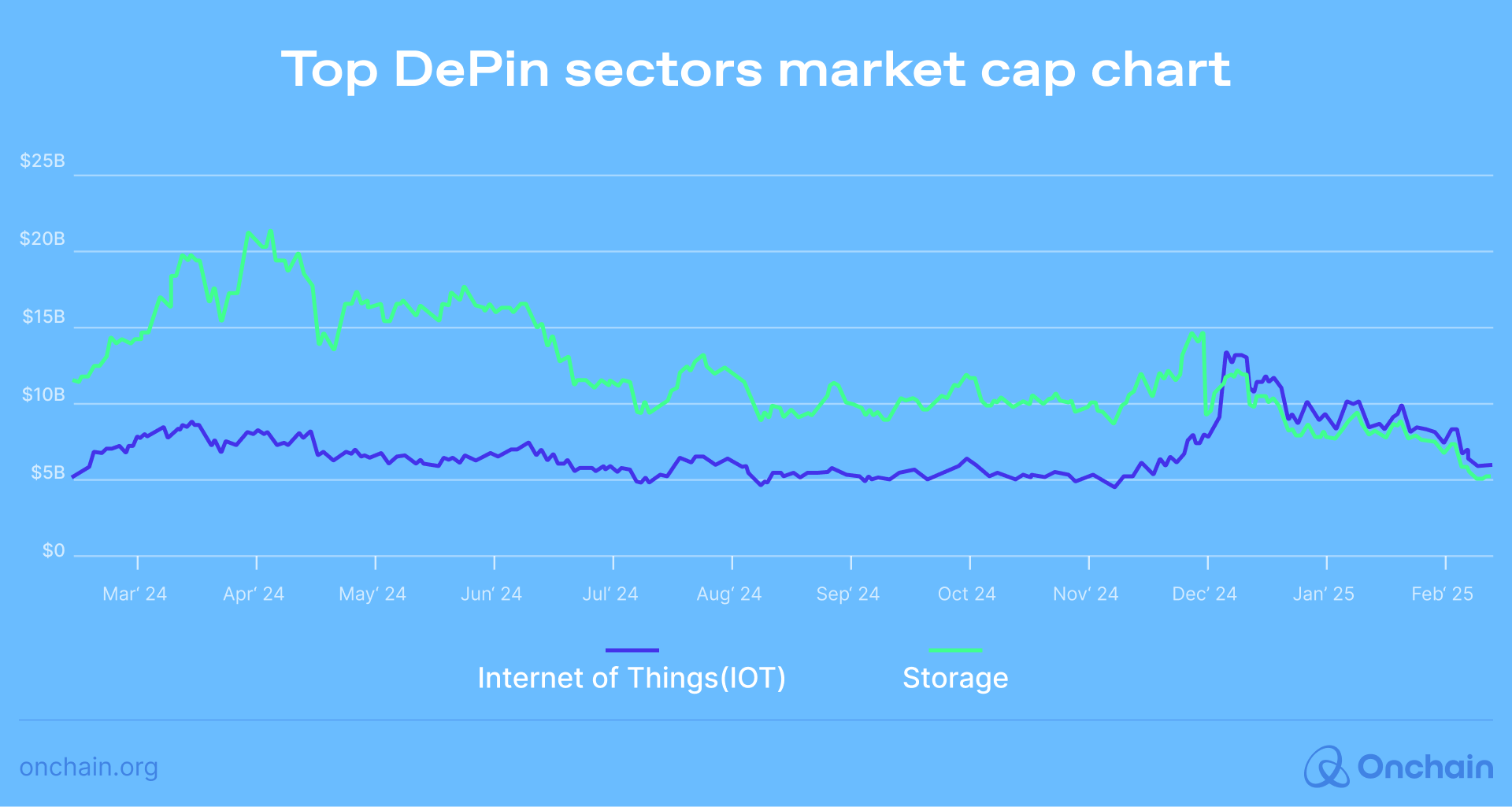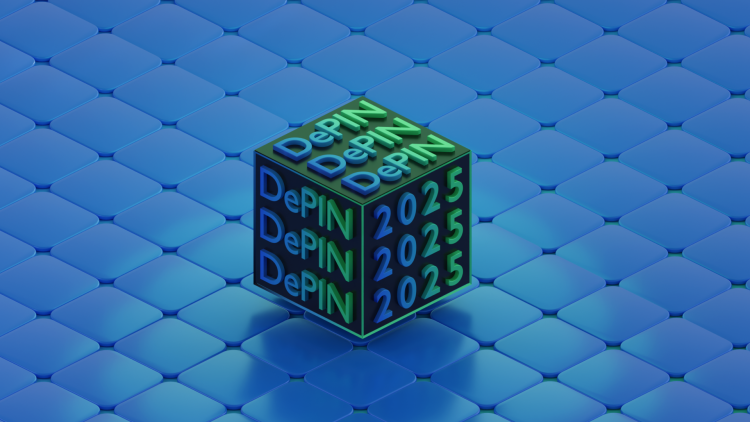I know an industry is popping off when I see a call for more regulation. Not that we want more regulation (let’s be honest, governments tend to trip over their toes regarding technology) but it’s an excellent indicator of traction.
DePIN projects are the blockchain industry making waves. Though it may seem like blockchain enthusiasts are excited to tokenize anything, the tokenization of infrastructure excites me because it means real-world democratization of shared resources.
DePIN has been gaining traction, which is why Aaron Basi of IoTEX called for more regulation. What does this mean for innovators and Web3 projects? Let’s start at the beginning.
What is DePIN?
DePIN stands for Decentralized Physical Infrastructure Networks. These networks use blockchain technology to decentralize physical infrastructures such as mobile phone or energy networks. DePIN projects incentivize individuals with token rewards to contribute by connecting an IoT device to the network.
As more and more contributors join a DePIN, a decentralized grid is created that provides the physical infrastructure for the digital network.
The concept first emerged in the early 2020s. Let’s have a look at the numbers to see where it’s at now.
The current state of DePIN

2024 was a landmark year for DePIN. The industry hit a market cap of $25B across 350 tokens in 2024, and more than 13 million devices contribute to various DePIN projects every day.
What’s especially exciting is that local governments are beginning to view DePIN as a solution to their struggle with infrastructure maintenance. Where budgets are stretched thin, DePIN proposes to improve and relieve government management. Negotiating a project with your local government could be the perfect launchpad for a DePIN project.
Despite its rapid growth, the DePIN landscape is still in the early stages of development. This makes it a perfect time for you to jump in, as the competition will not (yet) be fierce.
Like any early-stage industry, DePIN faces challenges before it can go mainstream.
- As I mentioned earlier, regulations have hardly been sorted for DePIN and its various applications. Tread lightly as you build your business plan.
- The tech is rapidly developing, but we’re talking about a blend of decentralized digital assets and physical assets that may historically be owned by private interests. Regardless of their source, blending the digital and physical is a challenge the DePIN industry is rapidly working toward solving.
- Infrastructure is expensive. While it may be easy to agree that decentralized infrastructure is a good idea, the cost of kickoff may be too high a barrier to entry for many. This will affect mass adoption (and how democratized DePIN truly becomes).
Still with me? Excellent. Let’s have a look at how DePIN is put together so you can steer forward with confidence.
Key components of DePIN
There are three critical ingredients that make DePIN the tastiest pie on the market. Build without one, and you won’t be considered DePIN worthy. Get your recipe book out — here is what you need to bake a yummy DePIN project:
Decentralization
The core philosophy behind DePIN, like all blockchain-based projects, is decentralization. Failures of infrastructure often emerge from lack of funding, resources, or adequate management and oversight. The idea that infrastructure can be decentralized puts more eyes to task and more wallets to work.
Network coordination
Managing this new wave of decentralization can’t be done without digital assets. DePIN requires smart contracts and interaction with the blockchain to provide staking and voting rights. DePIN also involves the software that manages the infrastructure, from switches to integrity monitoring. That’s where the “N” comes in.
Physical infrastructure integration
Finally, DePIN can’t function without the “P” — physical assets. Even the internet is not wire-free; its undersea cables wrap around the globe like an unseen spider web. When such infrastructure crosses borders, from city to city or country to country, who’s in charge gets blurry. There, again, DePIN shines.
Applications of DePIN
By now, you should have a pretty good idea of how powerful DePIN projects are. You may even be considering how your business can get involved. Here are four sectors that are certain to benefit from DePIN in 2025.
Healthcare
Health infrastructure is rapidly growing alongside the human population. The technical difficulties it faces are vast — from digitizing records to managing physical machines and medication supply. DePIN secures those resources and makes cross-collaboration easier. Projects like the CUDIS Ring (Helium) are one way individuals can get involved in DePIN healthcare now.
Energy
With all eyes on Los Angeles in January and California Edison blamed for starting the Eaton fire, infrastructure in the hands of the individuals is enticing. Not only does DePIN support the repairs of existing infrastructure, it also helps manage energy consumption, leading to ever-more sustainable usage. Check out PowerLedger for an excellent example of sustainable energy management.
Logistics
Millions of vehicles, from trucks to trains to ships to planes, are on the move every day to deliver goods and take away trash. Their critical role in everyday life was stark when shipping was disrupted during the pandemic. Not only does DePIN offer the management of goods, it also aims toward better management of resources, reducing carbon emissions and confusion. Check out DIMO for an innovative project in this space.
Supply Chain
Those vehicles need something to carry, and small businesses need to communicate with multiple systems to manage their supply. Not only does DePIN increase transparency and traceability, it increases the efficiency critical to small business margins. Businesses concerned with sustainability and quality can equally benefit from DePIN solutions. Filecoin provides the decentralized storage making this all possible.
The benefits of DePIN
The world spins ever faster. Our population increases as do our technical demands. Traditional tech is scrambling to keep up while receiving flak for dubious data and upkeep practices. DePIN solves these problems and more. Let’s have a look at how it will reshape your business (if you let it):
Efficiency
- DePIN provides infinite scalability thanks to its blockchain storehouse. You’ll be able to reach more customers, suppliers, and resources.
- DePIN offers serious automation thanks to the AI and IoT integration inherent to its tech.
Security
- The blockchain’s got your back when it comes to security. DePIN takes everything we use every day and locks it on an immutable ledger, making it virtually unhackable.
- DePIN also brings more transparency to your business, increasing trust and loyalty from your customers.
Cost Effectiveness
- DePIN lowers your infrastructure cost by monitoring peak energy usage to help you avoid higher fees.
- DePIN reduces overhead by helping you manage your suppliers and shipping.
Predictions for DePIN
DePIN could continue to conquer this year. From governments to small businesses and, yes, even gaming, DePIN is poised to integrate tech with the traditional, filling critical gaps in infrastructure and service deliverability.
It solves global challenges and reaches emerging markets while providing access right in your palm. Best of all? It busts outside the blockchain bubble, providing real world impact across sectors and borders.
But… there’s always a but. We uncovered several challenges DePIN is facing in the market and explain how to tackle them in our DePIN research. The resulting multi-chapter report provides a deep-dive into the landscape, including case studies and analysis critical for DePIN development. You’ll get clear insight into active DePIN projects, what business models are working, and the challenges to look out for in your own work. Move forward in the Track to start reading.

